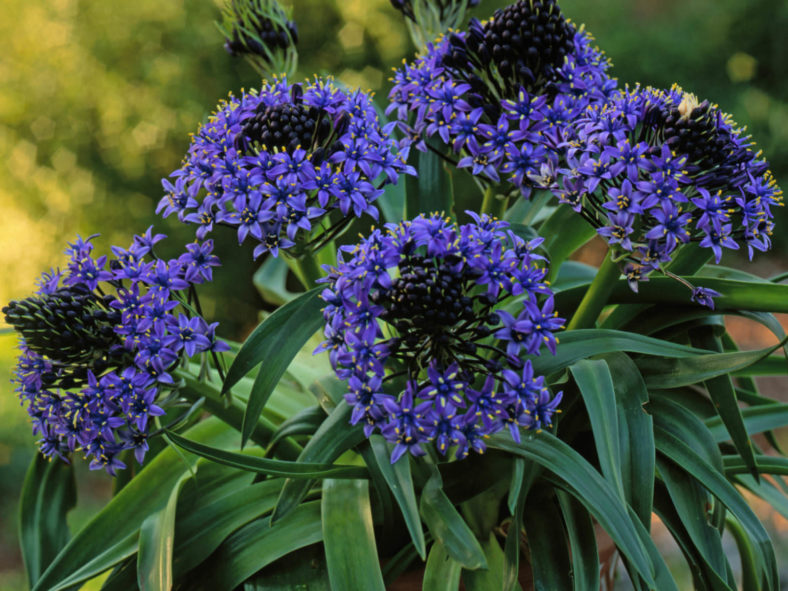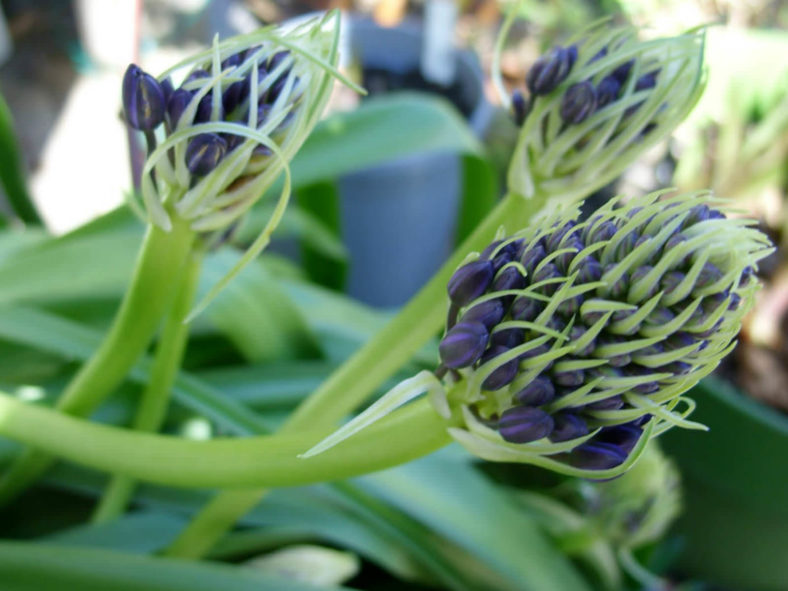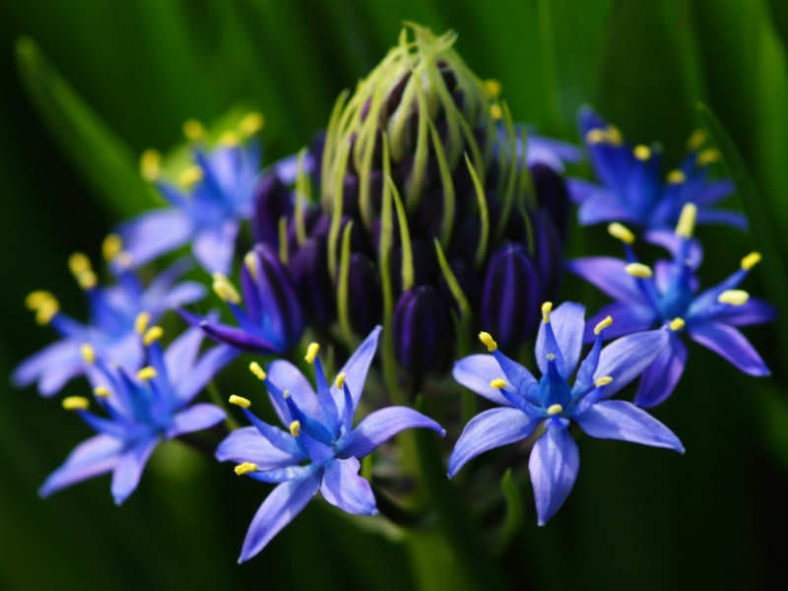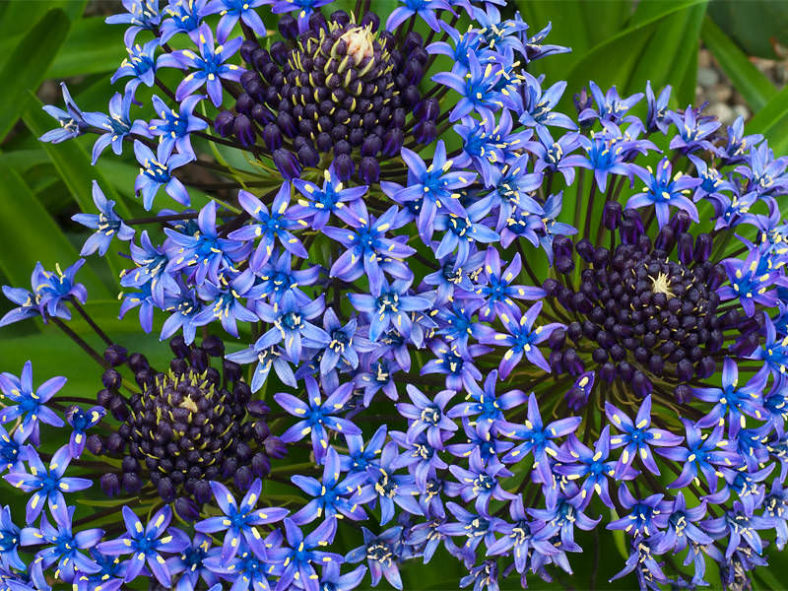Scientific Name
Scilla peruviana L.
Common Name(s)
Portuguese Squill, Peruvian Scilla, Giant Squill, Giant Scilla, Peruvian Lily, Caribbean Jewels, Cuban Lily, Hyacinth of Peru
Synonym(s)
Scilla hemisphaerica
Scientific Classification
Family: Asparagaceae
Subfamily: Scilloideae
Tribe: Hyacintheae
Subtribe: Hyacinthinae
Genus: Scilla
Flower
Color: Deep blue
Bloom Time: Spring
Description
Scilla peruviana is a bulb-bearing herbaceous perennial plant with dark green strap-shaped leaves. The bulb is white with a covering of brown scales and up to 3.1 inches (8 cm) in diameter. Leaves are up to 2 feet (60 cm) long and 1.6 inches (4 cm) wide.
The flowering stem is up to 1.3 feet (40 cm) tall and bears a dense pyramidal raceme of 40 to 100 flowers. Each flower is blue, up to 0.8 inches (2 cm) in diameter, with six tepals.

Hardiness
USDA hardiness zone 7a to 10b: from 0 °F (−17.8 °C) to 40 °F (+4.4 °C).
How to Grow and Care
Scilla is adapted to full sun or dappled shade and likes well-drained soil. It naturally grows in rocky wooded areas, so it is just at home in dryish, semi-wild parts of the landscape as it is in a rich, moist garden bed. Bulbs should be planted in the fall. Plant the bulbs in loose soil three to four inches deep and 8 inches (20 cm) apart with the tapered end. Scilla should receive regular water during the spring flush of growth. However, since the weather tends to be cool and moist during this time, it is generally unnecessary to irrigate. Also, it is important not to overwater, as the bulbs can rot.
The foliage should be left after the flowers fade, though it, too, fades in the heat of summer. Once Scilla leaves are all yellow, they may be cut to the ground, and the plant is allowed to remain dormant until the following spring. It is important that the bulbs not be watered during the dormant period.
See more at How to Grow and Care for Scilla.
Origin
Scilla peruviana is native to the western Mediterranean region in Iberia, Italy, and northwest Africa.
Links
- Back to genus Scilla
- Plantpedia: Browse flowering plants by Scientific Name, Common Name, Genus, Family, USDA Hardiness Zone, or Origin
Photo Gallery
Click on a photo to see a larger version.




